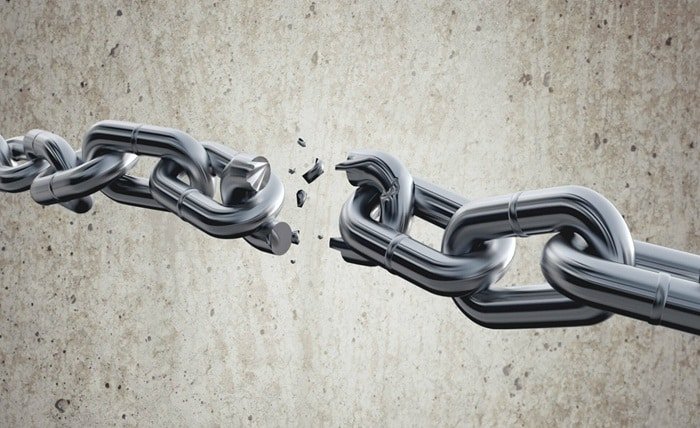Broken Link Strategies

Broken links are an inevitable part of managing a website, yet they can significantly impact user experience, SEO rankings, and overall credibility. When visitors encounter a broken link, they may feel frustrated, lose trust in the site, or even leave altogether. For businesses and content creators, these broken pathways can mean missed opportunities for engagement and conversions. However, rather than viewing them as a problem, broken links can be leveraged as a strategic advantage. By implementing the right strategies, site owners can reclaim lost traffic, strengthen link-building efforts, and maintain a seamless user experience.
Identifying Broken Links
The first step in managing broken links effectively is identifying them before they become a major issue. Regular site audits using tools like Google Search Console, Screaming Frog, or Ahrefs can help locate broken internal and external links. Broken links typically occur due to outdated URLs, deleted pages, or incorrect link formatting. Automated site crawlers scan webpages for HTTP errors, particularly 404 (Not Found) responses, which indicate broken links. Once identified, site owners can prioritize fixing or redirecting these links to maintain an uninterrupted browsing experience for users.
Fixing Internal Broken Links
Internal broken links can disrupt website navigation and harm SEO performance. Fixing them should be a priority to ensure visitors can move fluidly from one page to another. If the intended page still exists but has a different URL, setting up a 301 redirect will seamlessly send users to the correct location. When a page has been permanently removed without a replacement, it’s best to either remove the link or guide visitors to a relevant alternative. Regularly updating and reviewing content helps prevent outdated links from accumulating. By keeping internal links in working order, websites can preserve their authority and improve search engine rankings.
Leveraging External Broken Links for Link-Building
Broken links on external websites present an excellent opportunity for link-building efforts. If a competitor or industry-related site has a broken link pointing to a removed page, reaching out to suggest replacing it with a working link to relevant content can be beneficial. This strategy, known as broken link building, helps both parties—site owners get quality backlinks, and webmasters fix dead links to improve their user experience. Tools like Ahrefs or SEMrush can help identify broken backlinks within a niche. Crafting a polite, concise email to webmasters highlighting the broken link and offering a replacement increases the chances of earning a valuable backlink.
Preventing Future Broken Links
While it’s impossible to eliminate broken links entirely, proactive measures can reduce their occurrence. Using a consistent URL structure and avoiding unnecessary URL changes help maintain link stability over time. Implementing a regular website maintenance schedule ensures links are routinely checked and updated as needed. Additionally, setting up custom 404 pages that provide helpful navigation options can keep users engaged even when they encounter a broken link. Encouraging team collaboration on content management can also prevent accidental link mismanagement. By prioritizing link health, businesses can sustain a positive user experience and protect their SEO rankings.
The Role of User Experience in Broken Link Management
A well-maintained website should prioritize user experience, and broken links can be a significant deterrent. When users encounter broken links, their journey is disrupted, which can lead to frustration and abandonment. Ensuring that every link functions properly contributes to seamless navigation and builds trust with visitors. Additionally, implementing descriptive anchor texts helps users understand where a link will lead before clicking. By focusing on user experience, site owners can enhance engagement and encourage longer visit durations.
Monitoring and Reporting Broken Links
Regular monitoring and reporting of broken links can prevent long-term SEO damage and maintain a strong digital presence. Website managers should establish a structured approach for checking links and addressing issues promptly. Many content management systems offer plugins that automate broken link detection, reducing the need for manual intervention. Maintaining a log of broken links and their resolutions ensures continuous improvement. A proactive approach to monitoring helps keep a website in top condition and prevents recurring issues from affecting performance.
Final Thoughts
Broken links may seem like a nuisance, but they present opportunities for growth, engagement, and optimization when handled correctly. They work better at enhancing your SEO than wondering “how many backlinks do I need” and focusing on quantity only. By identifying and fixing internal broken links, businesses can maintain site structure and usability. Leveraging broken links from external sites can boost SEO rankings and create valuable link-building relationships. Proactive prevention strategies ensure websites remain functional and user-friendly over time. Rather than allowing broken links to become a hindrance, site owners can transform them into a strategic advantage. By staying vigilant and adaptive, businesses can keep their digital presence strong and authoritative in an ever-evolving online landscape.




